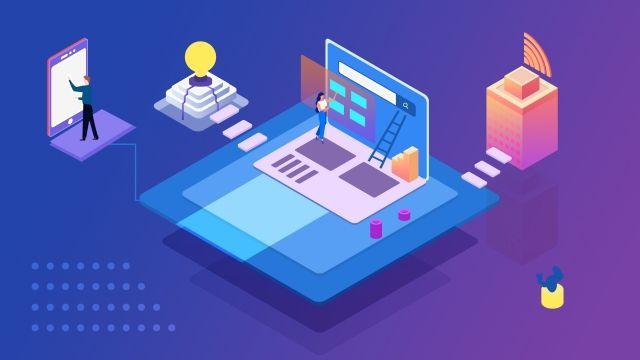5 Small Business Benefits of Using Technology in Onboarding Processes

LIKE.TG 成立于2020年,总部位于马来西亚,是首家汇集全球互联网产品,提供一站式软件产品解决方案的综合性品牌。唯一官方网站:www.like.tg
Companies leverage recruitment software tools to attract top talent. But that’s not the only time they need technology. They also need this to prepare for what comes after they extend employment offers. Newly-hired employees need time to acclimatize to their new work environments. A big part of their familiarity stems from a smooth employee onboarding experience, which technology can also ensure.
This article reveals five benefits small business owners like you can enjoy if you use technology for efficient onboarding.
1. Eliminates the Need for Physical Paperwork
Traditional employee onboarding processes typically involve plenty of paperwork. Fresh hires are required to fill or sign paper-based onboarding materials and documents. These documents don’t just collect sensitive personal data. They may also divulge confidential company information like network passwords and negotiated pay. The documents are then exchanged between the new hire and the organization.
The first problem with such an analog employee onboarding process is that it increases the likelihood of documents getting into the wrong hands. Humans aren't infallible. Documents may get lost in transit, exposing the candidate's personal data and the business' information in the process.
Second, such onboarding practices can be costly. When a small business gets the documents back from a potential hire, it'll have to store them with a physical filing system. The more employees it hires, the more storage space it will need. Not to mention all the paper and ink the business has to buy to print out the said documents in the first place.
Onboarding software addresses the above issues. It allows for a more secure transfer process since it involves electronic documents. It lowers onboarding costs, too, since digital tools don't require storage space in the real world or reams of physical paper.
2. Saves Time
Onboarding new employees can be a time-intensive undertaking. You have to get your new hire’s signatures for important documents, sign them yourself, and give them copies. Fast web hosts usually understand the need for efficiency and can play a crucial role in streamlining the onboarding process.
Where traditional onboarding is concerned, this requires a constant back and forth between a small business and new employee. The exchanges could happen over a series of hours, days, or weeks. A paper-based onboarding program may also be prone to human error that further extends the time frame.
In contrast, onboarding technology, coupled with fast web hosts, shaves down the time that would be better spent on other administrative tasks. Rather than involving physical exchanges, a paperless onboarding process may see modern businesses automating the entire process. By leveraging fast web hosts and onboarding technology, businesses can ensure that the necessary documents and information are easily accessible and can be transmitted swiftly and securely.
One great example of onboarding technology that does everything digitalized is LIKE.TG. The tool automates entire workflows that can be customized. It provides automatic notifications so you don’t miss a task in the onboarding workflow. LIKE.TG also walks you through important processes like I-9 and E-verify so that forms are properly completed and you meet all your deadlines.
Technology can also help streamline the onboarding process through a virtual knowledge base. A knowledge base streamlines employee onboarding by acting as an information hub employees can access at all times. It can help new hires get up to speed on the things they need to know about the company quickly.
Thanks to the information at their fingertips, a new employee can learn what’s expected of them without being told. The knowledge base can cover everything from employee handbook information to the company’s opening and closing times. For example, a new content creator can learn whether the company allows them to rely on generative AI when doing their work.
A comprehensive database may also provide new hires information on how to use the tools needed to perform their job functions. So, restaurant staff, for instance, can just check the database to learn how to use the company’s appointment booking system. Or new social media staff can see how the company’s social media listening tool works.
Onboarding that relies on this type of technology can also save your veteran employees precious time they’d have to spend physically mentoring incoming talent.
Overall, when a company creates an electronic knowledge base, it can establish a smooth onboarding process that benefits everyone involved. Even employees who have been in the company for long can just check the database if they need to be reminded of company processes and policies.
This guide was designed to help you navigate through those difficult tasks and help determine the right software for your organization, download our ebook now.
Download now3. Ensures Robust Training
If employers want to retain their top talent, they need to keep them happy. So, organizations need to ensure workers are paid much more than the minimum wage, have other work perks, and can benefit from a clear career path.
But offering these isn’t enough. Around 40% of employees who don’t receive the training they need to be effective in their roles will leave within the first year. In other words, ensuring a robust training program from the get-go is a must for employee retention.
Relying on technology for efficient onboarding can result in the new employee receiving robust training.
Although in-person training programs can be effective at onboarding talented employees, they have their limits. Not every employee can soak up knowledge like a sponge and apply what they’ve learned as soon as they learn it.
Some individuals take in knowledge better at specific times of the day. Only then can they develop the know-how required to do their jobs at an optimum level. With technology, like the virtual knowledge base we talked about earlier, you can also ensure the new hire has 24-hour access to resources that let them learn when they’re most comfortable learning.
Technology like pre-recorded training videos, chatbots, and artificial intelligence can also help new hires revise what they've learned on multiple occasions afterward so they can have a firmer grasp of concepts. These tools can fill in the gaps and answer any questions the employee may have had during an in-person training event.
Immersive technologies like simulations can also facilitate invaluable on-the-job experience and experiential learning. For example, if your small business involves hazardous working conditions, the new hire can make mistakes and internalize learned lessons in a safe virtual environment. When they find themselves faced with a real-world scenario, they’ll be prepared.
Also, virtual reality, in general, can help a new worker retain information better. In a 2018 study, the University of Maryland arrived at the above conclusion, citing the 8.8% improvement they noticed in their sample participants.
We’ll talk more about immersive experiences later.
4. Allows for Higher Engagement
I’ve mentioned how advancements in virtual reality technology have made it such that companies can now provide immersive training experiences. Simulations, in particular, can help new hires learn the best ways to act in different scenarios.
But these don’t just allow for robust training. They also present an opportunity to boost employee engagement among new workers. The simulations, for instance, enable new hires to “live” your brand in a virtual scenario and use gamification features.
To ensure you maximize the use of these simulations, make sure you incorporate innovative features and create forward-looking momentum. You’ll want the simulations to pose a challenge to new hires, too. This way, you won’t just develop their core competencies for work. You’ll also ensure they’re involved in every step of the way.
When employees are engaged, productivity is increased and, ultimately, employee turnover is reduced.
5. Fosters Collaboration
Small businesses with remote-first policies and distributed workforces use technology to foster collaboration among their employees. They rely on business communication apps, cloud-based project management software, video-conferencing tools, and more to keep their human resources connected as they work toward a common goal.
You can use many of the above tools to introduce your new hires to the team and lay the perfect foundation for good collaboration.
For example, when onboarding a new hire, you can utilize video conferencing software to set up virtual meet-and-greets. With this strategy, you hit two birds with one stone: you don’t just teach your new hire what they need to know as a new employee. You also get them in touch with other members of their team they’ll be working with.
With the use of communication tools with text-messaging capabilities, new hires can also confidently reach out to the appropriate colleague when the need arises.
Similarly, project management tools include robust collaboration features that help remote teams stay on the same page. You can store documents in them that act as resources to help new hires familiarize themselves with company policies, tools of the trade (i.e., the company’s technology stack), best practices, and procedures.
When they have unfettered access to the information they need, they can quickly become efficient individuals who can assist other members of the team to meet team goals.
In Closing
Technology can have a transformative effect on your small business' onboarding process. Digital onboarding tools do away with the need for paperwork and related organizational costs. They help you save time through automation, ensure robust training of your new hires, and allow for higher employee engagement.
In addition, in a world where remote work is more widely-accepted, technology can foster collaboration during an employee’s first days at a new company.
The next time you decide to take on new employees, consider incorporating technology for efficient onboarding processes. Enjoy its transformative benefits.
Want to Improve Your
Company Culture
is right for you.
Author Bio
Austin Andrukaitis is the CEO of ChamberofCommerce.com. He's an experienced digital marketing strategist with many years of experience in creating successful online campaigns. Austin's approach to developing, optimizing, and delivering web-based technologies has helped businesses achieve higher profit, enhance productivity, and position organizations for accelerated sustained growth.

LIKE.TG 专注全球社交流量推广,致力于为全球出海企业提供有关的私域营销获客、国际电商、全球客服、金融支持等最新资讯和实用工具。免费领取【WhatsApp、LINE、Telegram、Twitter、ZALO】等云控系统试用;点击【联系客服】 ,或关注【LIKE.TG出海指南频道】、【LIKE.TG生态链-全球资源互联社区】了解更多最新资讯
本文由LIKE.TG编辑部转载自互联网并编辑,如有侵权影响,请联系官方客服,将为您妥善处理。
This article is republished from public internet and edited by the LIKE.TG editorial department. If there is any infringement, please contact our official customer service for proper handling.


















